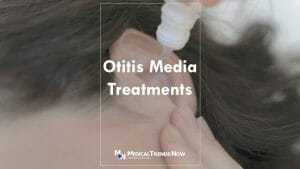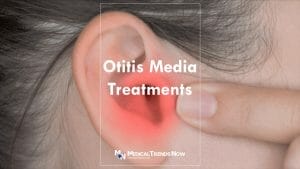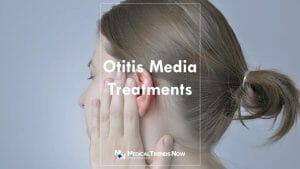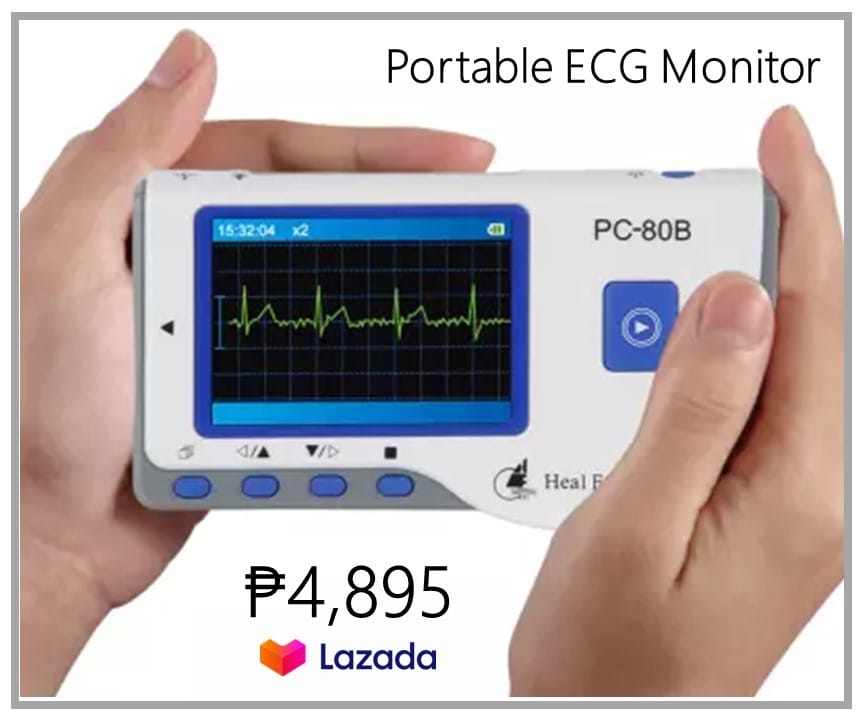Table of Contents
Learn about the treatments for otitis media in the Philippines, a common middle ear infection among Filipinos. Get tips from medical experts to help with pain, swelling, and other symptoms.
Otitis Media is a condition that affects the middle ear. Bacteria, viruses, or fungi can cause it. There are many different treatments for otitis media, but not all of them work for everyone. In this article, we will discuss what otitis media is and its available treatment options.
What Is Otitis Media?
Otitis media is an inflammation and infection of the middle ear and is the most common type of ear infection in children. It can cause pain, temporary hearing loss, and a feeling of fullness in the ear. It is typically treated with antibiotics, although in some cases, surgery may be necessary to relieve pressure or drain fluid. In addition to medical treatment, pain relief medications may be prescribed to help alleviate any discomfort caused by otitis media.
![WATSONS Levofloxacin 500mg 1 Tablet [PRESCRIPTION REQUIRED] Watsons Pharmacy](https://e52hyu4yuyt.exactdn.com/wp-content/uploads/2023/01/WATSONS-Levofloxacin-500mg-1-Tablet-PRESCRIPTION-REQUIRED-Watsons-Pharmacy-300x300.jpg?strip=all&lossy=1&ssl=1)
Common Causes of Otitis Media In The Philippines
Otitis media is an infection of the middle ear that is caused by a variety of factors. The most common cause of otitis media is a bacterial or viral infection, which can be spread through contact with an infected person or object. Other potential causes include allergies, exposure to secondhand smoke, and changes in air pressure.
Additionally, children and infants are at a higher risk of developing otitis media due to their immature immune systems. Treatments for otitis media depend on the cause but typically involve antibiotics or other medications.
![WATSONS Azithromycin antibiotics [PRESCRIPTION REQUIRED]](https://e52hyu4yuyt.exactdn.com/wp-content/uploads/2022/12/WATSONS-Azithromycin-antibiotics-PRESCRIPTION-REQUIRED-300x300.jpg?strip=all&lossy=1&ssl=1)
Signs And Symptoms of Otitis Media In The Philippines
The most common symptom of otitis media is ear pain, which may accompany a fever, muffled hearing, and discharge from the ear. Other signs and symptoms can include dizziness, nausea, vomiting, and feeling of fullness in the ear. If the infection is left untreated, it can lead to serious complications, such as hearing loss or facial paralysis.
Complications of Otitis Media In The Philippines
Although otitis media is typically easy to treat, potential complications may arise when the condition is left untreated. These complications can include hearing loss, speech delays, balance problems, and in some rare cases, meningitis. It is important to seek medical attention as soon as symptoms of otitis media occur to avoid the risk of developing any of these complications.
![OFTAQUIX Levofloxacin Ophthalmic solution 5ML Bottle [PRESCRIPTION REQUIRED] Watsons Pharmacy](https://e52hyu4yuyt.exactdn.com/wp-content/uploads/2023/01/OFTAQUIX-Levofloxacin-Ophthalmic-solution-5ML-Bottle-PRESCRIPTION-REQUIRED-Watsons-Pharmacy-300x300.jpg?strip=all&lossy=1&ssl=1)
Available Treatments For Otitis Media in the Philipines
Treatments for otitis media depend on the severity and cause of the infection. Antibiotics are often prescribed to treat bacterial infections, while antiviral medications may be used to treat viral infections. Surgery may be necessary in cases of severe infection to relieve pressure, drain fluid, and remove infected tissue.
Pain relief medications may also be prescribed to help alleviate any discomfort caused by otitis media. Additionally, using a warm compress on the affected area may help reduce pain and swelling.
1. Fluoroquinolones
Fluoroquinolones, such as ciprofloxacin and levofloxacin, are a type of antibiotic used in the treatment of otitis media. These antibiotics are effective at killing the bacteria that cause the infection, but they can also cause side effects such as nausea, vomiting, and diarrhea. Fluoroquinolones should only be used under the guidance of a healthcare professional as they should not be used for more than one or two weeks. Patients should also be aware of potential drug interactions when taking fluoroquinolones.
![Celsus Ciprofloxacin 0.3% 7.5mL Otic Solution [PRESCRIPTION REQUIRED] Watsons Pharmacy](https://e52hyu4yuyt.exactdn.com/wp-content/uploads/2023/01/Celsus-Ciprofloxacin-0.3-7.5mL-Otic-Solution-PRESCRIPTION-REQUIRED-Watsons-Pharmacy-300x300.jpg?strip=all&lossy=1&ssl=1)
2. Aminoglycosides
Aminoglycosides are an important class of antibiotics used to treat otitis media, an inflammation of the middle ear. These antibiotics work by inhibiting bacterial growth and are often used in combination with other medications to achieve the best outcome. While aminoglycosides are generally considered safe, they can cause damage to the kidneys and ears if used improperly. It is important for patients to be aware of any possible side effects and to consult their Filipino ENT doctor before starting any new treatment.

3. Corticosteroids
Corticosteroids are often prescribed for the treatment of otitis media, which is an inflammation of the middle ear. These medications work to reduce swelling and can help to reduce pain and discomfort associated with otitis media. Corticosteroids can be administered orally or through a topical cream, depending on the severity of the condition.
Additionally, they may be used in combination with antibiotics to help reduce the risk of more severe complications such as hearing loss. It is important to note that corticosteroids should not be used without consulting a doctor as they can have potentially serious side effects.

4. Pharyngotomy
Pharyngotomy is one of the effective treatments for otitis media, a condition that occurs when there is inflammation in the middle ear. This procedure involves making a small incision in the throat to drain any fluid that may have built up in the area. This can help to reduce symptoms such as pain, fever, and hearing loss.
Additionally, this procedure often results in long-term relief as it helps prevent further fluid buildup. As with any medical procedure, it is important to speak with your doctor before undergoing a pharyngotomy to determine if it is the best option for your individual situation.

5. Surgery
Surgery is a last resort for treating otitis media and is only used in extreme cases where other treatments have failed. It typically involves draining the infected fluid from the middle ear and repairing any damage caused by the infection. Surgery is a serious medical procedure and can carry risks, so it should only be considered after carefully consulting with a Filipino doctor.

6. Homeopathy
Homeopathy has been used historically as one of the best alternative treatments for otitis media, an inflammation of the middle ear. Homeopathic remedies are typically composed of natural substances and can be used to reduce symptoms such as pain, fever, and congestion. Patients should consult their doctor before using homeopathic remedies to treat otitis media, as their effectiveness is still inconclusive.
Additionally, the doctor may recommend other treatments in addition to homeopathy that is more appropriate for a particular case.

7. Relieving Symptoms
Relieving symptoms of otitis media can include using a warm compress to reduce pain and swelling, taking over-the-counter pain relievers, and using decongestants to reduce congestion. It is also important to keep the ear dry and avoid activities involving water or pressure, such as swimming. If symptoms persist, a doctor should be consulted for further treatment.

Lifestyle And Home Remedies For Otitis Media
- Keep The Ear Dry: Keeping the ear dry is essential in preventing further complications of otitis media. Avoid swimming and other activities that involve getting the ear wet.
- Avoid Self-Medication: Always consult a Filipino doctor or healthcare professional before treating otitis media with any medications.
- Use A Warm Compress: Applying a warm compress to the affected ear can help relieve pain and discomfort.
- Take Over-The-Counter Pain Relievers: Over-the-counter pain relievers such as ibuprofen or acetaminophen can help to reduce pain.
- Use An Ear Drops Solution: Ear drops containing a combination of oil, water, and vinegar can help to reduce inflammation and discomfort.
- Use Humidifiers: Keeping the air around the ear moist can help to reduce the pain associated with otitis media. Consider using a humidifier in the bedroom or living room.

FAQs About the Best Treatments for Otitis Media in the Philippines
Here are the frequently asked questions regarding the treatments for otitis media in the Philippines.
Do I have a middle ear infection?
Do I have a middle ear infection? Middle ear infections, or otitis media, are common among children and can cause pain and hearing loss. This article will discuss the symptoms of an ear infection and what treatment options are available for those in the Philippines.
Ear infections occur when fluid builds up in the middle ear and becomes infected. Symptoms of an infection may include discharge from the ears, fever, pain when chewing or yawning, irritability, poor appetite, and hearing loss. If you believe you may be dealing with an ear infection, it is important to speak to your doctor as soon as possible.
Treatments for otitis media depend on its severity but generally start with antibiotics prescribed by your doctor. Pain medications such as ibuprofen or acetaminophen can also be used to help alleviate discomfort associated with an ear infection.

What is acute otitis media?
Acute otitis media (AOM) is an infection of the middle ear that can affect children and adults. It can cause a great deal of pain, discomfort, and in extreme cases, hearing loss. AOM commonly affects people in the Philippines due to increased humidity levels and exposure to bacteria from their environment.
AOM is caused by a bacterial or viral infection resulting from fluid buildup behind the eardrum due to colds or allergies. Symptoms may include earache, fever, trouble sleeping, irritability, and muffled hearing. In some severe cases, pus might even be visible coming out of the ear canal.
Treatment for AOM involves antibiotics such as amoxicillin or cefuroxime; topical antibiotic drops can also be used to reduce inflammation and fight infection within the middle ear space.

Are antibiotics one of the best treatments for otitis media?
Otitis media is a common condition among children in the Philippines. It is an inflammation of the middle ear, which can cause symptoms such as pain and fever. Although antibiotics are commonly used to treat this condition, recent studies have questioned their efficacy and safety.
Antibiotics are typically prescribed for otitis media when there is evidence of infection from a bacterial source. However, research has suggested that most cases of otitis media in children are caused by viruses, making antibiotics ineffective for treatment. Additionally, overuse or misuse of antibiotics can lead to antibiotic resistance, which can make these drugs much less useful for treating other illnesses in the future.
Therefore, it’s important for parents to consider other treatments for otitis media instead of relying on antibiotics alone.

What’s the best medical management of acute otitis media?
Acute otitis media (AOM) is an ear infection that affects the middle ear and can cause pain, hearing loss, and fever. It is a common condition among children in the Philippines, so it is important to be aware of the best medical management practices for this condition.
The most effective treatment for AOM typically involves antibiotics to reduce inflammation and fight off bacteria. Depending on the severity of the infection, doctors may prescribe either short-term or longer-term antibiotics such as amoxicillin or cefuroxime axetil. If symptoms are mild or absent, some physicians may choose to observe patients instead of prescribing medication immediately. Decongestants and steroids can also help relieve sinus pressure if needed. Additionally, pain relievers like acetaminophen or ibuprofen can be used to manage any discomfort associated with AOM.

What is a tympanostomy tube?
Otitis media, an infection of the middle ear, is a common childhood illness in the Philippines. Treatments for otitis media often involve the insertion of a tympanostomy tube. Tympanostomy tubes are tiny, hollow cylinders placed in the eardrum to allow air and fluid to flow freely from the inner to the outer ear. This helps to improve hearing, reduces pain and pressure caused by fluid build-up behind the eardrum, and can reduce the frequency of ear infections.
Tympanostomy tubes are considered safe and effective for treating persistent or recurrent otitis media that does not respond to other treatments such as antibiotics or watchful waiting. The procedure involves making a small incision in the eardrum under general anesthesia so that a tube can be inserted into it.
What happens to my ear tube during otitis media?
Otitis media is a common ear infection, particularly in children. It’s estimated that up to 75% of children in the Philippines will suffer from this condition at least once before they reach the age of three. Treatments for otitis media typically require having an ear tube inserted into the eardrum. But what happens to this tube once it has been placed?
The above article has provided an overview of what happens when a patient has an ear tube installed for the treatment of otitis media. We’ve discussed why and how it is used, as well as some potential risks associated with its use so that Filipino patients and their families can make informed decisions regarding their treatment options. Additionally, we have looked at what happens during follow-up visits after the insertion procedure, including removing or replacing the tube if necessary.
What is chronic otitis media?
Chronic otitis media is an ear infection that affects the middle ear, resulting in pain and hearing loss. It is a common condition in children and adults alike, particularly in the Philippines. This condition can have a significant impact on quality of life, making it important for those affected to understand what it is and how to treat it.
Chronic otitis media occurs when the eustachian tube that connects the middle ear to the back of the nose becomes blocked or damaged. This prevents air from entering and draining fluid from the middle ear, which creates a favorable environment for bacteria or viruses to grow. Symptoms vary depending on severity but may include chronic discharge from one or both ears, hearing loss, dizziness, ringing in one or both ears (tinnitus), headaches/earaches, and low-grade fever.
What are the types of otitis media?
Otitis media is an inflammation of the middle ear commonly caused by bacteria or viruses. It can be a painful condition affecting adults and children, leading to hearing loss if left untreated. There are three main types of otitis media: acute otitis media (AOM), chronic otitis media (COM) and secretory otitis media (SOM). Each type has its own symptoms and requires a unique treatment plan.
When it comes to treating otitis media, the most common approach is antibiotics. Antibiotics may be used to treat infections caused by bacteria; however, they will not work for viral infections. In cases where antibiotics are ineffective, other medications, such as steroids or antihistamines, may be prescribed to reduce inflammation and relieve pain associated with the condition.
Final Thoughts: Treatments For Otitis Media In The Philippines
While there are many different treatments for otitis media, not all of them work for everyone. This article has outlined some of the most common and effective treatment options for otitis media. Patients should consult with their doctor to determine which treatment is best for them and to discuss any possible side effects.
Sources
- Otitis media with effusion: MedlinePlus Medical Encyclopedia
- Fluid in the middle ear: Care Instructions – MyHealth Alberta
- Chronic suppurative otitis media – WHO
- Respiratory Infection and Acute Otitis Media | Infectious Diseases | JAMA Pediatrics
- Anatomy, Head and Neck, Ear Tympanic Membrane – NCBI
- The Diagnosis and Management of Acute Otitis Media – American Academy of Pediatrics
- Middle Ear Fluid – The Royal Victorian Eye and Ear Hospital
- Diagnosis and treatment middle ear fluid – ENT Columbia
- Inside the Ear Infection: Symptoms, Signs & Causes – Cleveland Clinic
- Pressure in the Middle Ear: How to Relieve Ear Pressure When Your Ears Are Plugged Up – Banner Health
- Ear Infections – Medical Center ENT Associates Houston
- Children with otitis media: Middle Ear Infections (Otitis Media) (for Parents) – Kids Health
- Signs or symptoms otitis media – Middle ear infection (otitis media) – NHS inform
- Inner Ear Infection: Symptoms, Signs & Causes – Cleveland Clinic
- Acute Otitis Media in Children – AAFP
- Middle Ear Effusion: Otitis Media with Effusion (OME) – The Children’s Hospital of Philadelphia
- Management of otitis media: Ear Infection (Otitis Media) Symptoms & Treatment Hopkins Medicine
- Frequent ear infections in adults: Chronic Ear Infections | Ear, Nose and Throat | UCI Health
- Intracranial complications of otitis media: Complications of otitis media – Associação Brasileira de Otorrinolaringologia e Cirurgia Cérvico-Facial
- Pressure within the middle ear – Ear barotrauma – MedlinePlus Medical Encyclopedia
- Middle ear microbiology: Examining the Evidence for an Adult Healthy Middle Ear Microbiome – American Society for Microbiology
- Middle ear fluid cultures: Bacterial culture, middle ear fluid – Allina Health account
- Infection in the middle ear | Antibiotic Use | CDC
- Infection in outer ear and eardrum – Better Health Channel
- Why ear infections are common in children – Cedars-Sinai
- Otitis media in young children (Middle Ear Infection) – Stanford Children’s Health
- Children with recurrent otitis media – NCBI
Disclaimer
This website is intended to educate both members of the general public and those working in the medical field on the prevalence, causes, and methods for preventing, diagnosing and treating diseases that affect people throughout their lives. This website’s content is provided solely for informational reasons and is not meant to serve as a substitute for the advice of a qualified medical practitioner.









